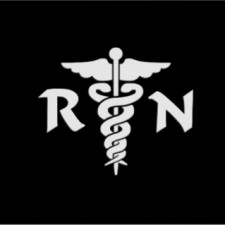You must be logged in to reply to this topic.
- My life as a Rhizobium leguminosarum
-
April 4, 2013 at 2:21 pm #13270

Deisy Lopez, RNParticipantHello friends! My name is Rhizobium leguminosarum, but you can call me rhizobia. I was the first species in my family to be identified in 1889. I am a gram-negative bacterium. So that means, if you try to examine me under your microscope, I will retain the counterstain, Safranin, used in gram-stain, and stain pink or red. Unlike, those fat gram-positive, I have a thin single peptidoglycan layer. Being that I am a member of the Prokaryote bacteria, I lack membrane-enclosed organelle and divide by binary fission. I am motile and rod-shaped, however I am genetically pleomorphic, which means I can be any shape you would like me to me. I am aerobic and that means I NEED oxygen to survive. My main purpose in life is agricultural use. I spend most of my life in soil and my friends and family best know me for specifically infecting the roots of legume plants such as beans, peas, and clover. My plant host entraps me by a curling root hair and I induce the plant to form infection threads that grow through the root hair and leads to nodule formation, similar to intracellular infections. If my relationship with my plant produces ineffective nodules, no nitrogen is fixed, however I still receive nutrients I would normally get and could be considered parasitic. Now don’t get the wrong idea about me, I am not normally parasitic or virulent, my presence just leads to formation of nodules in my plant roots. You could say me and my host plant have a very close, symbiotic relationship, although I don’t think we’re ready to take it to the next level (Sh, Don’t tell her!). I am the only nitrogen-fixing bacteria with a relationship with legumes, so I am a very busy guy. These plants need me to fix nitrogen from the atmosphere for her to use to support her growth. And I don’t mind being used in this way, as long as I’m getting my nutrients as well.
Reduction of atmospheric Nitrogen to ammonium is one of the largest inputs of available nitrogen into the biosphere, which is why I am so important for industrial agricultural use. The farmer mixes me into peat moss with seeds of legumes to ensure infection of the plants. My colonization in the plant roots convert nitrogen in the atmosphere to ammonia and provide organic compounds to the plants. I get supplied with nutrients also via photosynthesis and my plant host protects me in the nodule. I am currently being designed so I can colonize crop plants, such as corn and wheat in the future. The ultimate goal would be to introduce my family & me directly into plants because of its potential to increase world’s food supply. This means my whole generation could keep on living and be used for other jobs! I use the alternative pathway to Glycolysis called the Enther- Doudoroff pathway. This makes me very unique because I can metabolize glucose without glycolysis or the Pentose phosphate pathway. I have a huge family, about 98 cousins. My uncles Bradyrhizobium, Mesorhizobium and Ensifer and Rhizobiaceae are the leaders. My closest relative is Rhizobium etli. I met R. etli in my first root infection and we’ve been inseparable ever since. A couple months ago, my uncle Rhizobiaceae had told us the new member of our family was Agrobacterium. Although we were forced to become family, we don’t get along. He’s not into the idea that he got moved into our family without being able to fix nitrogen. My friends include Pelagibacter, Azospirillium, Acetobacter and Gluconobacter, Rickettsia, Ehrlichia, Caulobacter and Hyphomicrobium, Bartonella, Brucella and Nitrobacter. Rickettsia, Ehrlichia, Bartonella, and Brucella think that their better than everyone else in the alphaproteobacteria’s because they infect their host by living in them. I personally think that’s evil and disgusting, but I’m no one to judge. Despite all of our differences, we all learned to like one another and be a big happy family. Click on the attached file to see me doing what I do best! First, I attach onto a root hair. I then produce an infection thread and it spreads into the root cells. I transform myself into a bacteroid and cause the cells to enlarge. The enlarged root cell then forms a nodule.
Bibliography
“Genome Biology.” Genome Biology. N.p., n.d. Web. 28 Mar. 2013.
Tortora, G.J., Funke, B.R., (2013) An Introduction to Microbiology. Pearson Education. Glenview, IL
Weir, B. S. (2006) Systematics, Specificity, and Ecology of New Zealand Rhizobia. PhD Thesis. School of Biological Sciences, The University of Auckland.
You must be logged in to reply to this topic.


